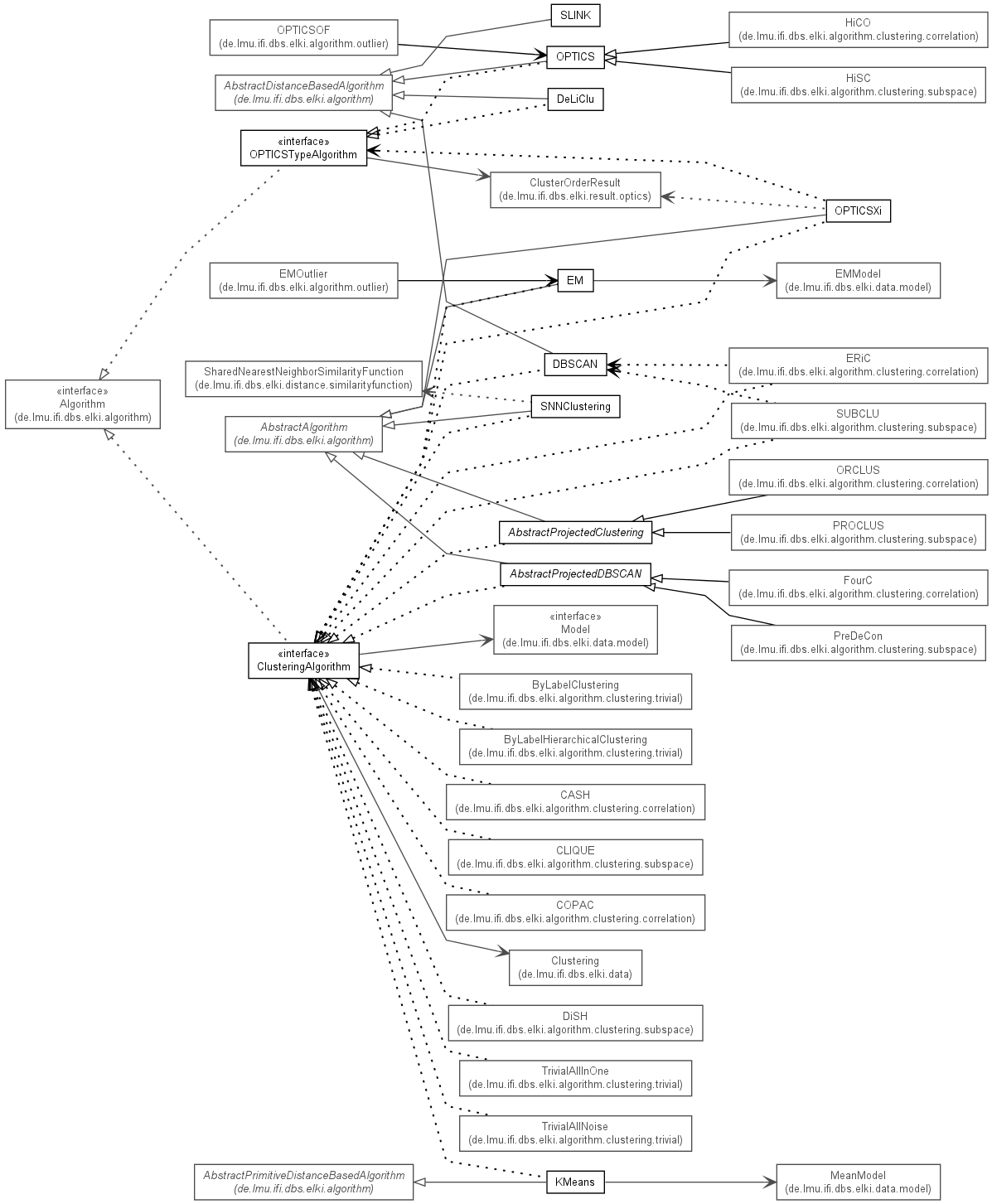|
Class Summary |
| AbstractProjectedClustering<R extends Clustering<Model>,V extends NumberVector<V,?>> |
Abstract superclass for projected clustering algorithms, like PROCLUS
and ORCLUS. |
| AbstractProjectedClustering.Parameterizer |
Parameterization class. |
| AbstractProjectedDBSCAN<R extends Clustering<Model>,V extends NumberVector<V,?>> |
Provides an abstract algorithm requiring a VarianceAnalysisPreprocessor. |
| AbstractProjectedDBSCAN.Parameterizer<V extends NumberVector<V,?>,D extends Distance<D>> |
Parameterization class. |
| DBSCAN<O,D extends Distance<D>> |
DBSCAN provides the DBSCAN algorithm, an algorithm to find density-connected
sets in a database. |
| DBSCAN.Parameterizer<O,D extends Distance<D>> |
Parameterization class. |
| DeLiClu<NV extends NumberVector<NV,?>,D extends Distance<D>> |
DeLiClu provides the DeLiClu algorithm, a hierarchical algorithm to find
density-connected sets in a database. |
| DeLiClu.Parameterizer<NV extends NumberVector<NV,?>,D extends Distance<D>> |
Parameterization class. |
| EM<V extends NumberVector<V,?>> |
Provides the EM algorithm (clustering by expectation maximization). |
| EM.Parameterizer<V extends NumberVector<V,?>> |
Parameterization class. |
| KMeans<V extends NumberVector<V,?>,D extends Distance<D>> |
Provides the k-means algorithm. |
| KMeans.Parameterizer<V extends NumberVector<V,?>,D extends Distance<D>> |
Parameterization class. |
| OPTICS<O,D extends Distance<D>> |
OPTICS provides the OPTICS algorithm. |
| OPTICS.Parameterizer<O,D extends Distance<D>> |
Parameterization class. |
| OPTICSXi<N extends NumberDistance<N,?>> |
Class to handle OPTICS Xi extraction. |
| OPTICSXi.Parameterizer<D extends NumberDistance<D,?>> |
Parameterization class. |
| OPTICSXi.SteepArea |
Data structure to represent a steep-down-area for the xi method. |
| OPTICSXi.SteepAreaResult |
Result containing the chi-steep areas. |
| OPTICSXi.SteepDownArea |
Data structure to represent a steep-down-area for the xi method. |
| OPTICSXi.SteepScanPosition<N extends NumberDistance<N,?>> |
Position when scanning for steep areas |
| OPTICSXi.SteepUpArea |
Data structure to represent a steep-down-area for the xi method. |
| SLINK<O,D extends Distance<D>> |
Efficient implementation of the Single-Link Algorithm SLINK of R. |
| SLINK.CompareByLambda<D extends Distance<D>> |
Order a DBID collection by the lambda value. |
| SLINK.Parameterizer<O,D extends Distance<D>> |
Parameterization class. |
| SNNClustering<O> |
Shared nearest neighbor clustering. |
| SNNClustering.Parameterizer<O> |
Parameterization class. |


